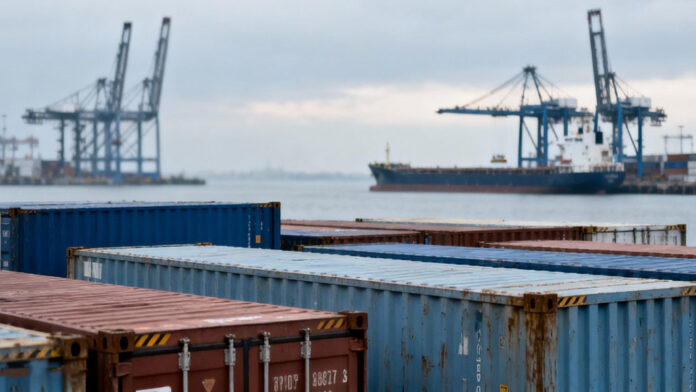According to the latest Global Port Tracker report from the National Retail Federation (NRF) and Hackett Associates, monthly U.S. import volumes are projected to fall below 2 million TEU for the remainder of 2025. This change is attributed to increasing tariffs and preemptive seasonal stockpiling that is altering trade patterns at major container ports.
With the majority of holiday products already in stores, U.S. retailers have reduced shipments after bringing in supplies early in the year to mitigate the impact of new sector-specific tariffs.
“This year’s peak season has come and gone, largely due to retailers frontloading imports ahead of reciprocal tariffs taking effect,” said Jonathan Gold, NRF’s vice president for supply chain and customs policy.
New 25% tariffs on items such as upholstered furniture, kitchen cabinets, and bathroom vanities are set to take effect in the coming week, with additional increases slated for January. A postponed tariff rise on Chinese imports is also anticipated to be implemented on November 10, unless the Biden administration decides to delay it yet again.
Ben Hackett, founder of Hackett Associates, cautioned that ongoing uncertainties in policy are causing “significant economic uncertainty” throughout the supply chain.
“Many large companies preemptively imported goods to build up inventories, but as those stockpiles are depleted, the full inflationary impact of the tariffs will become apparent,” he explained.
The report indicates that the U.S. handled 2.32 million TEU in August—down 2.9% from July but slightly higher compared to the previous year. September imports are projected to reach 2.12 million TEU, while October volumes are expected to decline to 1.97 million TEU, representing a 12.3% decrease from the same period in 2024.
Looking ahead, November and December are forecasted to drop even further to 1.75 million TEU and 1.72 million TEU, respectively, marking the lowest volumes since March 2023.
While total import volumes for the first half of 2025 increased by 3.7% year on year, the overall total for the year is expected to decline by 2.9% to 24.79 million TEU. This downward trend is projected to persist into early 2026, with January estimated at 1.87 million TEU, down 16.1% year over year, and February forecasted at 1.77 million TEU, reflecting a decrease of 12.8%.
As we analyze the US import volume forecasts 2025, it becomes clear that external factors such as tariffs and shifting trade dynamics are significantly influencing these predictions. The anticipated figures highlight a pressing need for stakeholders to adapt strategies accordingly in response to these changing conditions.


































